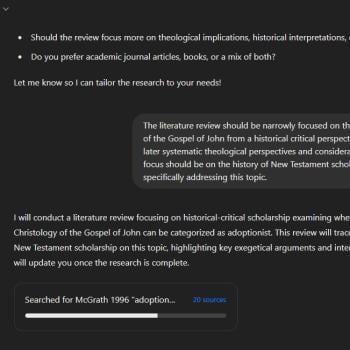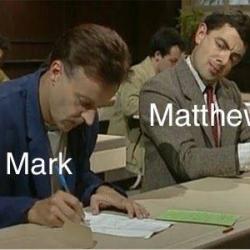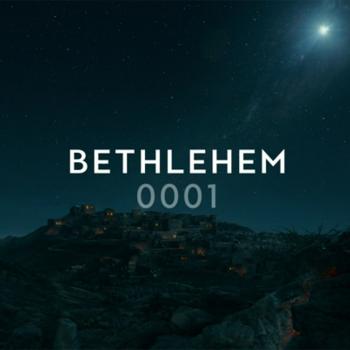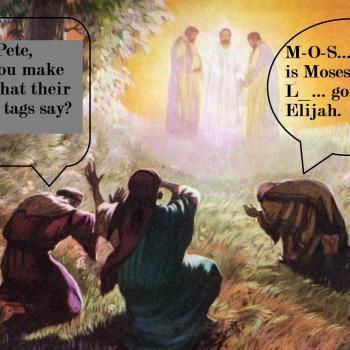Let me start with the news that Mark Goodacre shared a pdf of an article written by Francis Watson, arguing that the recently-found Coptic papyrus that has been dubbed the “Gospel of Jesus’ Wife” is a fake. He followed that up with a second shorter pdf on the forger’s alleged technique. Some are already pronouncing the issue resolved. I would like to suggest that that judgment is premature.
First, Watson emphasizes that the Gospel may be “fake” in more than one sense, and it may be an ancient “fake” which is simply derivative of other Gospels. That, of course, is what most of our Gospels look like – most of them recycle material found in others, known directly from another written source or indirectly through oral transmission (whether oral recitation of a written source or other forms of storytelling). When that happens early enough, we consider it useful historical confirmation. When it is late, we consider it secondary. But rarely do we simply label a work a “fake.” And even when popular voices or even scholars use such a label, that does not necessarily mean that the matter is settled – take the Gospel of Thomas and the divergent views about it as an example.
Watson also makes what I consider an unfortunate move for his case when he compares the text to the Secret Gospel of Mark on the assumption that the latter is clearly a forgery. That view is indeed popular in certain circles, but handwriting experts and many others consider it extremely unlikely that Morton Smith could have forged the work. And so hitching his argument to a particular view on that other text will seem to many scholars to undermine his case, not support it.
Now let me turn to the heart of Watson’s article, which is a line-by-line analysis of the fragment. Watson’s claim that the first line matches the line division of a specific manuscript of the Gospel of Thomas is interesting, but not conclusive, I am sure most would agree. Watson highlights multiple points of intersection, often verbatim or involving minor modifications and rearrangements of words, that intersect in particular with the Gospel of Thomas. In some instances, Watson seems to be going so far as to suggest direct dependence on a very slim basis – for instance, suggesting that “I will be with her” is a deliberate reworking of “I will be with you” in Matthew 28:20b. It is easy to spot such correspondences and make much of them when dealing with an ancient language, but the truth is that in English we use many phrases repeatedly with no direct borrowing. I rarely say “I will be with you shortly” or “I will be with them at the party,” but if I do, I never have Matthew 28:20b in mind.
And so Watson’s article is to be appreciated for its placement of the text in its literary context. As others had already suggested, the text most likely represents a reworking of earlier texts. That should come as no surprise, since it is true of most early Christian Gospels, beginning with the Synoptics.
And so I would like to suggest that nothing that Watson presents in his article indicates that the work is a modern forgery, or even that calling it an ancient “fake” will usefully contribute to our understanding of the text. Chemical analysis may hopefully settle the matter to everyone’s satisfaction, and it may be worth the damage to the fragment that would be involved, in order to achieve that higher degree of certainty. Until then, the discussion should continue, and any pronouncement of the matter as settled is at best premature.
Here’s what others have been saying:
John Byron, Joel Watts, and others have linked to or embedded Jon Stewart’s discussion. I like his suggestions about possible ways the text might have continued after “My wife…” Stephen Colbert also mentions it. And the cartoon at The Sacred Sandwich seems timely.
Dan Wallace offers what he calls a “reality check.” Stephen Prothero doesn’t know and doesn’t care whether Jesus was married. Larry Hurtado thinks that calling the text “The Gospel of Jesus’ Wife” based on such a small fragment is problematic. Paul Barford has taken to calling it “PDodge” – an abbreviation for the “Dodgy Papyrus” coined by David Gill.
Mark Goodacre, Jim Davila, James Tabor, Steve Caruso, Joel Watts, and Jim West (twice) have all mentioned Simcha Jacobovici’s comments and the plans for a documentary. Inevitably when some are inappropriately sensationalist, others respond by being inappropriately dismissive.
UPDATE: Since I wrote this post, other contributions to the discussion have been added by Timo Paananen, Stephen Carlson, and Chuck Grantham, Ferrell Jenkins, Dirk Jongkind and Gavin R – plus a sarcastic quip from Bob Cargill.
UPDATE: Since the last update, there have been posts by Ben Witherington (a video), Allan Bevere, Brian LePort, Jeffrey Garcia, James Tabor, and Bart Ehrman.












